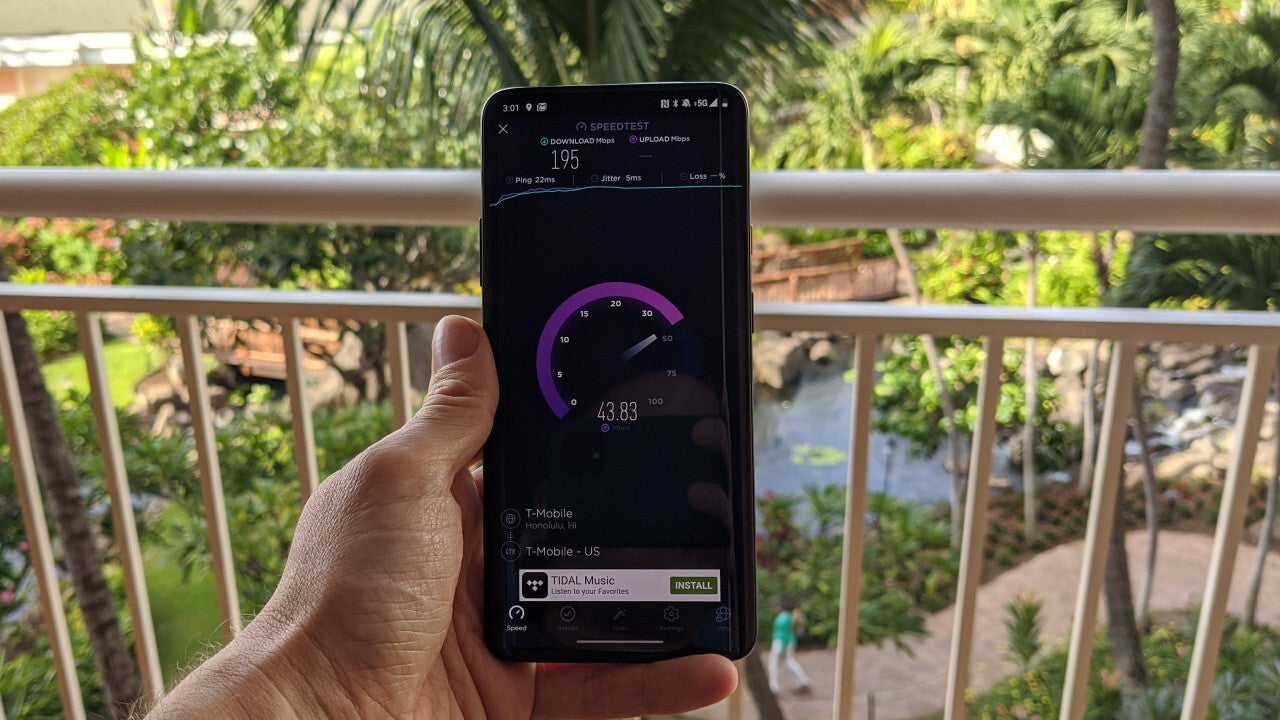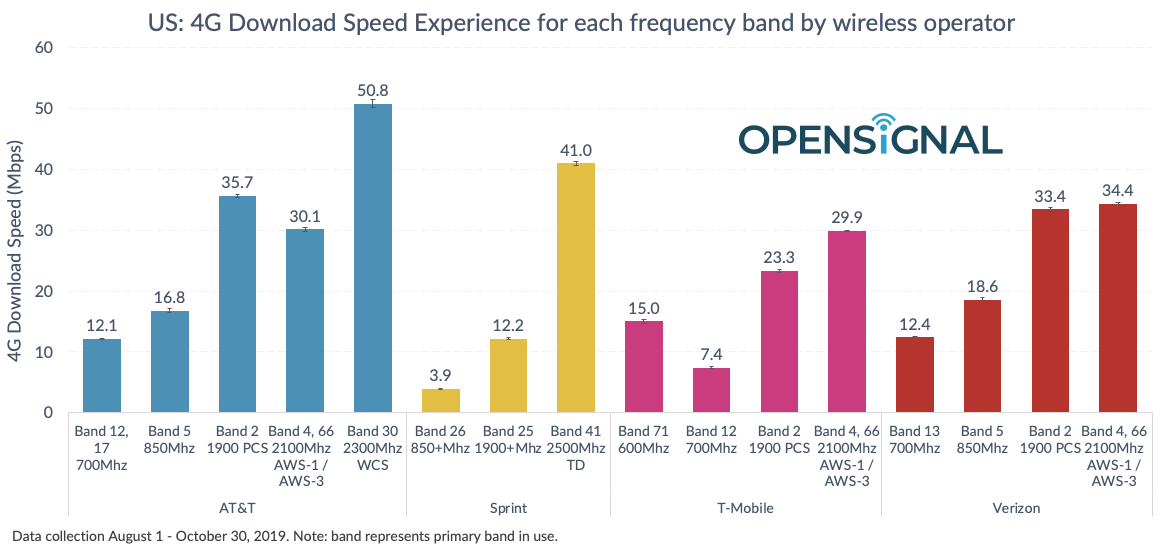T-Mobile's 5G coverage is live, compare with Verizon, AT&T and Sprint 4G speeds by band

The Kotzatoskis are T-Mobile's first 5G family, straight from a T-Mobile store in Lititz, PA
A lot, it turns out. While 5G can reach amazing speeds, they are reserved only for the mmWave bands like Verizon's or AT&T's that have low building penetration and require you to, ahem, hold the phone right.

Sascha Segan's real-life T-Mobile 5G low-band test in Hawaii reveals speeds commensurate with the nimblest of 4G bands
The mids of Sprint and lows of T-Mobile cast a wider net, but are slower, as Sascha Segan found out, that is why T-Mobile plans to use this layered cake of building out its 5G coverage to catch'em all.
T-Mobile just made the nerdiest wedding cake ever showing how it plans to use the “layers” of 5G spectrum. pic.twitter.com/Vd4YbYQ5lh
— Ina Fried (@inafried) December 4, 2019
Even in this nascent state of 5G, it is becoming increasingly clear how important carrier bands and the FCC's band auctions are. There is one slated for this month, and a critical mid-band auction for 2020.
In the meantime, here's an OpenSignal chart that depicts the huge differences between download speeds when using individual bands in Verizon, AT&T, T-Mobile and Sprint's portfolios.

As you can see, the high bands offer the best download speeds, and AT&T is rather privileged in that respect, as its 2.3GHz Band 30 hits up to 50Mbps speeds, while Sprint's 2.5GHz Band 41 spectrum is not far behind.
If the merger of Sprint with T-Mobile goes through, Big Magenta will have quite the wide spectrum coverage to play with in the 5G era, forcing Verizon and AT&T to rethink their band auction participation this month and in 2020.










Things that are NOT allowed: